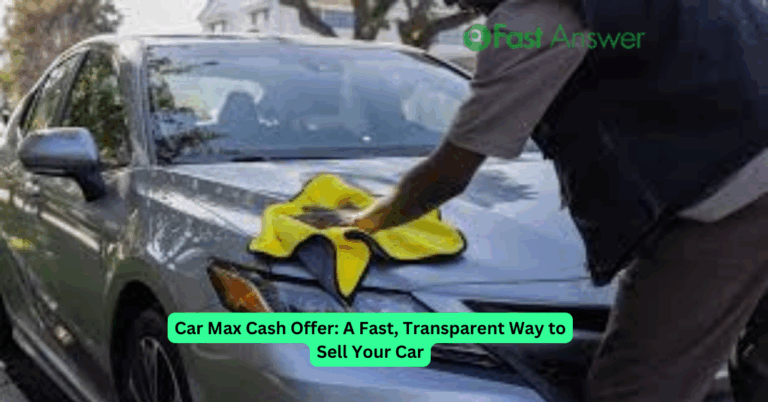Understand the True Kelley Blue Book Value for My Car Before You Sell or Trade
If you’re getting ready to sell, trade, or refinance your vehicle, knowing the Kelley Blue Book value for my car is one of the smartest first steps you can take. This trusted pricing guide has been a go-to resource for decades, helping drivers understand exactly how much their vehicle is worth based on current market conditions, mileage, condition, and location. Whether you’re working with a dealership, private buyer, or simply curious about your vehicle’s equity, Kelley Blue Book (KBB) helps you make informed decisions and avoid being lowballed. If you’re ready to get a fair price and confidently negotiate, here’s what you need to know about using KBB to evaluate your car.
What Makes Kelley Blue Book a Trusted Source for Car Valuations?
Kelley Blue Book has earned its reputation by providing real-time, data-backed car values that reflect actual sales across the country. Unlike other tools that rely on fixed depreciation formulas, KBB adjusts its estimates based on current market supply, buyer demand, location, and vehicle-specific details like trim level and condition. Their pricing tools allow users to select from various transaction types such as trade-in value, private party value, or suggested retail price offering a full picture of what your car is worth in different situations. KBB’s longstanding partnerships with dealers and auto industry analysts make it one of the most accurate and respected resources in automotive pricing.
How to Check the Kelley Blue Book Value for My Car
Finding out your car’s value with KBB is quick and simple. Start by visiting the Kelley Blue Book website and entering your vehicle’s year, make, model, and mileage. You’ll also input your zip code, as regional market factors can influence value. After selecting your car’s trim level and standard or optional features, you’ll choose its condition based on KBB’s easy-to-follow criteria ranging from “excellent” to “fair.” Once complete, you’ll receive an estimated range showing how much your car is worth for trade-in, private sale, or instant cash offers from participating dealers. This process provides a tailored, transparent value you can use to compare offers or set your asking price.
Understanding the Differences Between Trade-In and Private Sale Values
When you look up the Kelley Blue Book value for your car, you’ll notice separate estimates for trade-in and private party sale. A trade-in value is what a dealer might offer when you apply your car’s value towards the purchase of another vehicle. This number is typically lower, as dealers factor in reconditioning costs and resale margins. In contrast, private party value is what you might expect to earn when selling your car directly to another individual usually resulting in a higher payout. KBB also provides a suggested retail value, useful if you’re buying from a dealership and want to ensure you’re paying a fair price. Knowing the differences helps you choose the best route to maximize your return.
What Affects the Kelley Blue Book Value of My Car?
Several key factors influence the Kelley Blue Book estimate you receive. Mileage is one of the biggest lower mileage cars typically retain more value. Overall condition, accident history, and maintenance records also play a role. Optional features like leather seats, upgraded tech, or premium wheels can enhance value, while cosmetic damage or missing service records may reduce it. KBB also tracks broader market trends such as fuel prices, seasonality, and inventory supply, which can affect how much your car is worth at any given time. Keeping your car in good shape and knowing what adds or subtracts from value can make a noticeable difference when it’s time to sell.
How to Use Your KBB Value When Selling or Negotiating
Once you have your Kelley Blue Book estimate in hand, it becomes your best tool for negotiation. When trading in, share your KBB trade-in range with the dealer and explain how you arrived at your valuation. If selling privately, list your car slightly above the KBB private party value to leave room for negotiation, but be prepared to justify your asking price with documentation and photos. You can also use the KBB Instant Cash Offer program to receive online offers from nearby dealers, often valid for several days. By showing that you’ve done your homework, you’ll gain credibility and likely secure a better deal whether you’re behind the wheel or across the table.
Frequently Asked Questions
Is Kelley Blue Book value always accurate?
KBB values are based on real-time market data and are considered very accurate, but condition and local demand may cause slight variances.
Can I get a KBB value without VIN or license plate?
Yes, you can enter vehicle year, make, model, trim, and mileage manually to receive a valuation.
Does KBB value reflect taxes or fees?
No, the KBB estimate does not include taxes, registration fees, or dealer fees it reflects the vehicle’s base market value.
How often is KBB data updated?
Kelley Blue Book updates pricing data weekly, keeping values aligned with real-world sales and trends.
Can I use KBB to value leased vehicles?
KBB doesn’t calculate lease payoff amounts, but knowing the market value can help determine whether a lease buyout is a good deal.


